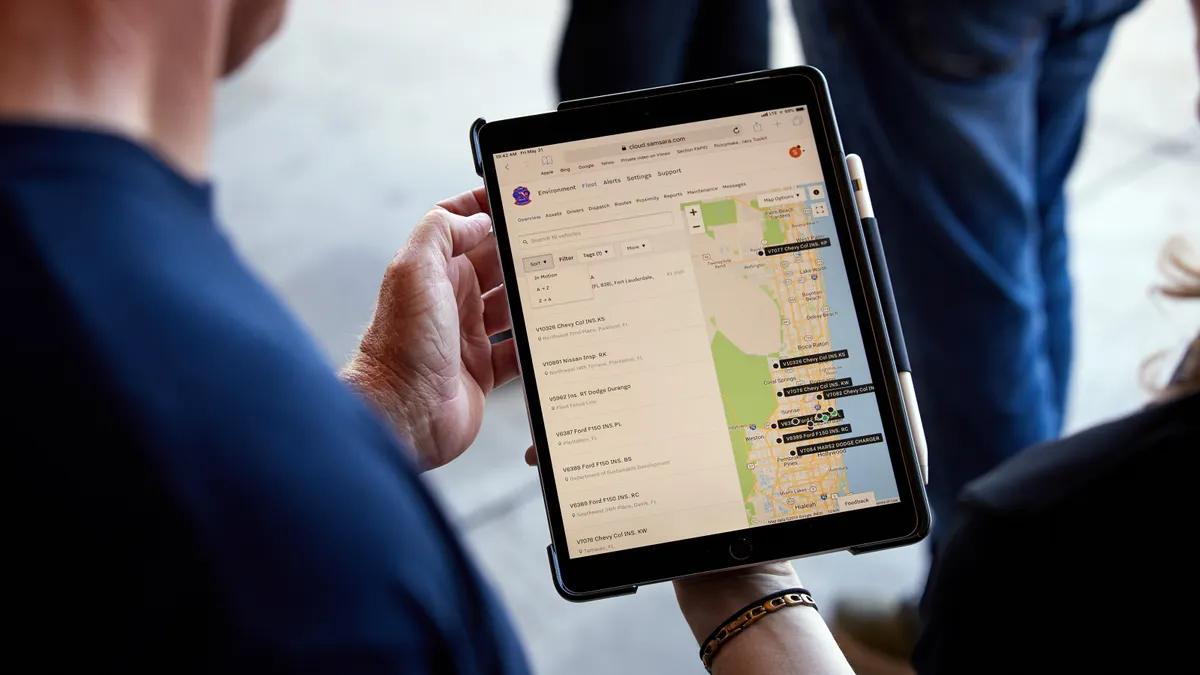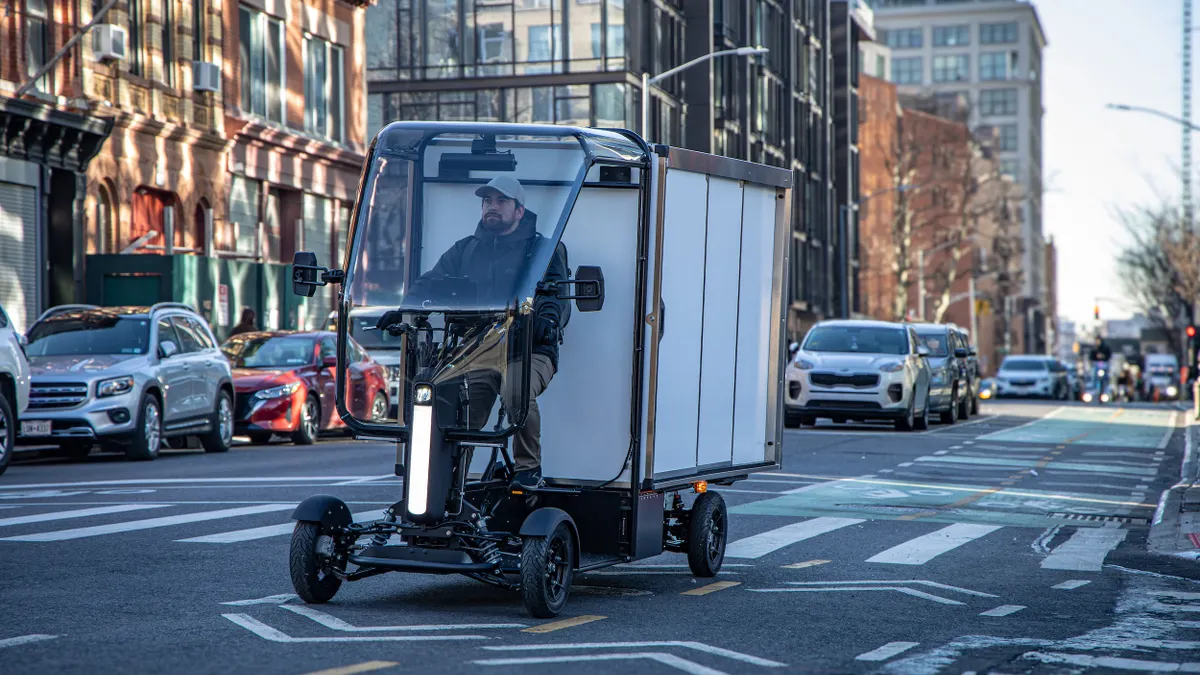The health of municipal vehicle fleets rarely grabs news headlines. But it should because the age and performance of vehicle fleets are directly connected to the ability of cities to provide critical services to their citizens.
For example, the condition of San Francisco’s fire engines and ladder trucks—one third of which are over 20 years old—were described recently by the city’s fire chief as a “crisis” that could limit the department’s ability to fight fires. San Francisco is not alone in its concerns about how vehicle fleet health could negatively impact vital public services.
In Pittsburgh, ambulances have broken down en route to the hospital so many times that the city’s Bureau of Emergency Medical Services has reportedly stopped keeping track. In Atlanta, over half of police vehicles have exceeded their prescribed service life. There is one big reason why vital municipal vehicle fleets have not been replaced: money.
Municipal budgets are especially stressed and weighed down by an uncertain economic climate. For example, Washington, D.C.’s credit rating was downgraded due to large revenue shortfalls in the wake of cuts in federal employment and funding. Simply put, cities lack sufficient funds to replace vehicle fleets. Pittsburgh estimates it should spend between $20 million and $24 million annually to maintain its fleet; the city budget allocates $6 million to purchase new vehicles in 2025, down from $9.5 million in 2024.
Aging Fleets, Strained Budgets, and Rising Public Expectations
Strained budgets and aging fleets are a common challenge for cities big and small. Municipalities of all sizes share something else: their citizens depend on reliable fleets for a range of the most fundamental city services.
“There is a direct correlation between how well your fleet is operating and the services cities and states are able to provide,” said Sean McCann, Area Vice President, Public Sector, for Samsara, the connected operations technology trusted by organizations across public and private fleets. “Well-operating fleets give citizens a level of confidence that their tax dollars are providing value to you, your family and your community.”
But in an era of perpetually tight budgets and an acute need for reliable and cost-effective fleets, innovation to improve your fleet management is paramount. Fortunately, technology and analytics have advanced to a point where implementing cutting-edge solutions can help fleets of any size and age significantly extend their service lives, prevent breakdowns that interrupt the delivery of critical services, and slash maintenance budgets.
Why Technology Is the New Lifeline for Municipal Fleets
For example, Samsara works with municipalities to outfit vehicles with devices that monitor a variety of performance metrics—including fuel consumption, driver behavior, and time spent idling—that are then stored in the cloud for analysis. This continuous, real-time monitoring unlocks a host of ways fleet managers can optimize their vehicles to improve reliability, save large amounts of money, and, ultimately, improve the safety and services provided to citizens.
There’s a big difference in the cost incurred and disruption created when an ambulance breaks down en route to the hospital versus when a problem is identified and fixed before it arises. “Most of the time, municipalities will wait until there is a check engine light or something is obviously wrong before taking a vehicle in for maintenance. By that time, it’s already too late, and the problem could be very expensive or impossible to fix,” McCann said.
Preventive maintenance, by contrast, is far cheaper than reacting to a vehicle breakdown—and has no negative impact on service provided to citizens. One way telematics and cloud-based analytics enable this is by tracking how long vehicles idle. “Low mileage doesn’t always tell the full story. What we find with a lot of fleets is that vehicles are idling for long periods of time,” McCann said. “They’re not putting miles on the vehicle, but they are putting hours on the engine. That ages a vehicle fast, but if you monitor it, you can act before it becomes a problem. Between preventive maintenance and idling time, municipalities can save millions of dollars.”
From Idling to Insights: How Data-Driven Fleets Save Money
In addition to unlocking savings through preventive maintenance and reduced idle time, digital fleet management allows municipalities to eliminate inefficient, paper-based processes. Many cities still rely on manual tracking methods—clipboards, spreadsheets, and phone calls—to manage their fleets and coordinate vehicle movements. These outdated systems slow down response times, limit visibility, increase the risk of human error, and make it harder to justify spending or locate missing equipment.
Digitizing fleet operations replaces those fragmented tools with a single platform that combines real-time visibility, historical data, vehicle cameras, and performance insights. This lets fleet managers make better, faster decisions and simplifies internal reporting, audit responses, and budgeting by providing clear information to decision-makers. For cities under intense financial pressure, these efficiencies add up to significant cost savings and measurable gains in service reliability.
The visibility provided by cameras also can help cities avoid expensive lawsuits. For example, outward-facing vehicle cameras can exonerate drivers accused of causing an accident. “A lot of municipalities are targets and will just pay someone who says they got hit by a city vehicle to avoid a lawsuit,” McCann said. “Cameras can provide proof when fleet drivers are not at fault and save a lot of money.”
New Orleans Shows What’s Possible with Connected Fleet Management
The City of New Orleans offers a clear example of what’s possible when a municipality moves away from disconnected tracking tools and embraces a digital-first approach. With more than 2,600 vehicles and assets spread across 41 departments—including police, fire, and Emergency Medical Services—the city needed a unified solution that would help improve coordination and accountability. Before turning to Samsara, New Orleans EMS used a mix of radio GPS, Apple AirTags, and even magnetic boards to track assets.
By implementing Samsara’s Connected Operations Platform—including vehicle telematics, AI-powered dash cams, and Asset Tags—New Orleans gained full visibility into vehicle locations, driver behavior, and equipment utilization. That’s allowed leaders to make smarter staffing and routing decisions, ensure vehicles are properly maintained, and improve public safety outcomes. “We used to rely on pins on a board,” said one city official. “Now we have real-time visibility across our operations. That means quicker decisions, better resource allocation, and ultimately, improved public safety.”
As a result of adopting a single, cloud-based platform, New Orleans has reduced vehicle downtime, lowered risk, and improved the performance of a fleet that is central to delivering critical services. The city’s experience shows that you don’t need to replace every vehicle—you just need better insight into the ones you already have.
Ready to learn more about promoting public safety and fleet efficiency with Samsara?










